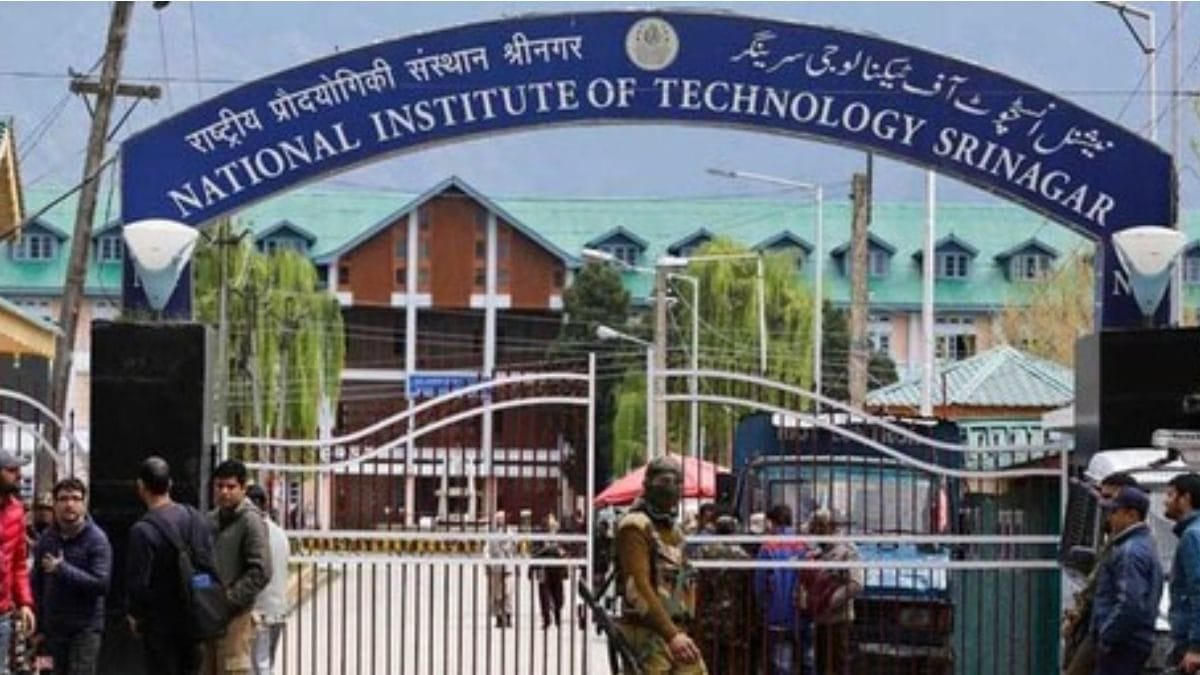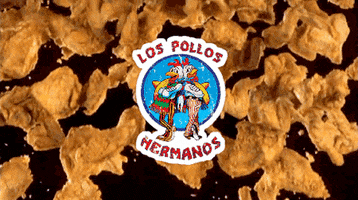Navigation
Install the app
How to install the app on iOS
Follow along with the video below to see how to install our site as a web app on your home screen.
Note: This feature may not be available in some browsers.
More options
Style variation
-
Hey there! Welcome to TFC! View fewer ads on the website just by signing up on TF Community.
You are using an out of date browser. It may not display this or other websites correctly.
You should upgrade or use an alternative browser.
You should upgrade or use an alternative browser.
Health is Wealth - Which unadulterated ghee to buy
- Thread starter Deleted member 9785
- Start date
- Replies 42
- Views 3K

Shreyas Talpade suffers heart attack, undergoes angioplasty
As per a source close to the actor, "Shreyas, 47, was shooting for 'Welcome to the Jungle' and in the evening he suffered a heart attack and underwent angioplasty. He is fine now."
Life is so risky anything can happen to anybody anytime
COVID side effects

 www.news18.com
www.news18.com

NIT Srinagar Final-Year Student Dies by Cardiac Arrest, Institute Says 'Saddened by Her Loss' - News18
The student identified as Samridhi Gupta was a final-year student of the Electronics and Communication Engineering department at NIT Srinagar
Hope people are aware of what is A2
A2 refers beta Casein ( milk protein- The brown colored left over of traditional ghee making)
Where as Ghee is 100% pure fat ( saturated fatty acids)
Is some one selling you A2 ghee means, that person is taking you for a ride.
How can protein be present in Ghee , which is a 100% fat?
Coming to startup and production of pure, pesticide free ghee.
Desi cow like Gir/Sahiwal/Red Sindhi milk fat % is around 4-5% . At the most 6%. Implying one liter of milk will have approximately 60gm fat ( assuming 6% fat in milk) That means a minimum of 17 liters of milk needed to produce 1kg Ghee. In realty it will be little more than this
Average yield per desi cow breeds at at the max 15 liters.
If a firm is claiming to sell pure desi cow ghee on large scale, just think of how many cows are needed to produce that quantity
Similarly, A2 milk supply in urban areas, to produce 1000 liters of desi cow milk per day , one needs minimum of 70 cows ( assuming each cow yields 15 liters per day, which is on the higher side). Just cross check do we have any such large scale Desi cow farms any where near urban areas? Where from they are getting this so called desi cow milk in thousands of liters to brand and sell ( unless u market few thousand , branding, marketing is not economical)
almost 45% of milk produced in India is from Buffaloes ( contains both A1 and A2 fraction of Casein)
Approximately 20% of milk produced is from Desi cow
Hence 45+20 = 65% of milk produced in India has A2 milk
30% milk is from crossbred cow ( cross between desi cow and exotic cow)
A2 refers beta Casein ( milk protein- The brown colored left over of traditional ghee making)
Where as Ghee is 100% pure fat ( saturated fatty acids)
Is some one selling you A2 ghee means, that person is taking you for a ride.
How can protein be present in Ghee , which is a 100% fat?
Coming to startup and production of pure, pesticide free ghee.
Desi cow like Gir/Sahiwal/Red Sindhi milk fat % is around 4-5% . At the most 6%. Implying one liter of milk will have approximately 60gm fat ( assuming 6% fat in milk) That means a minimum of 17 liters of milk needed to produce 1kg Ghee. In realty it will be little more than this
Average yield per desi cow breeds at at the max 15 liters.
If a firm is claiming to sell pure desi cow ghee on large scale, just think of how many cows are needed to produce that quantity
Similarly, A2 milk supply in urban areas, to produce 1000 liters of desi cow milk per day , one needs minimum of 70 cows ( assuming each cow yields 15 liters per day, which is on the higher side). Just cross check do we have any such large scale Desi cow farms any where near urban areas? Where from they are getting this so called desi cow milk in thousands of liters to brand and sell ( unless u market few thousand , branding, marketing is not economical)
almost 45% of milk produced in India is from Buffaloes ( contains both A1 and A2 fraction of Casein)
Approximately 20% of milk produced is from Desi cow
Hence 45+20 = 65% of milk produced in India has A2 milk
30% milk is from crossbred cow ( cross between desi cow and exotic cow)
Kesariya A2 Ghee. Best ghee using it from years.
Deleted member 19066
TF Premier
I Individually Urge all users to provide Product Link instead of name..
So that we can Purchase directly with Trust.
So that we can Purchase directly with Trust.
Except that membership!! 😀Country delight is good
Apt request -- going by the usernameI Individually Urge all users to provide Product Link instead of name..
So that we can Purchase directly with Trust.
Apt request -- going by the username
Best A2 ghee on budget.
Have tried Two brothers products and can say that their products are high quality generally speaking. Anyone interested can check them out https://twobrothersindiashop.com/collections/ghee
Have tried Two brothers products and can say that their products are high quality generally speaking. Anyone interested can check them out https://twobrothersindiashop.com/collections/ghee

Rather than private labels, small state cooperatives have good ghees as well here I am not saying big ones like Amul.
Too much craze is also not good https://economictimes.indiatimes.co...ce-sheet-in-the-red/articleshow/108055841.cms
FinoGuy
TF Legend
Limit use of ghee (don't consume much).
I don't believe A2 is worth the price, A1 is just fine (don't fall for marketing gimmick to empty your pocket).
Preference wise 1st: make at home yourself 2nd:Use your local milk union ghee like nandini, amul, dodla, arokya etc.
3rd: go for reputed brands like ITC ashirwad, nandini etc
I don't believe A2 is worth the price, A1 is just fine (don't fall for marketing gimmick to empty your pocket).
Preference wise 1st: make at home yourself 2nd:Use your local milk union ghee like nandini, amul, dodla, arokya etc.
3rd: go for reputed brands like ITC ashirwad, nandini etc
Half knowledge/Misinformation is dangerous. A1 is not at all fine my friend.Limit use of ghee (don't consume much).
I don't believe A2 is worth the price, A1 is just fine (don't fall for marketing gimmick to empty your pocket).
Preference wise 1st: make at home yourself 2nd:Use your local milk union ghee like nandini, amul, dodla, arokya etc.
3rd: go for reputed brands like ITC ashirwad, nandini etc
FinoGuy
TF Legend
Bro, with due respect. Believe me.Half knowledge/Misinformation is dangerous. A1 is not at all fine my friend.
Three years of research & plenty of followups later I'm commenting this.
A2/A1 is all hype made to fill pockets of sellers by exploiting confused citizens .
100.01 rs( person A) is richer than 100rs( person B) . Marketing has power to hide that 0.01rs and spread news as person A is richer than person B. Only way one will know is by digging deep & knowing what's happening.
Just get back to me with some of these answers.
- What is A2 in milk
- How much percentage of total protein is A2
- What is Total protein to A2 & total protein to A1 ratio in buffalo milk, cow foreign breed and cow Indian breed.
- What is the total percentage of A2 milk used in developed countries in comparison to developing countries?
Devil in the milk is a great read for someone who wants to know more about A1/2.
Personally, I buy ghee made from buffalo milk from a local village vendor. This is for regular use.
For cow ghee, occasionally, I go with Shuddham Desi Bilona Cow Ghee. I purchase this only once or twice a year as it is costly and may not be fresh like what I get from local vendor.
Personally, I buy ghee made from buffalo milk from a local village vendor. This is for regular use.
For cow ghee, occasionally, I go with Shuddham Desi Bilona Cow Ghee. I purchase this only once or twice a year as it is costly and may not be fresh like what I get from local vendor.
Last edited:
In lining the summary.Devil in the milk is a great read for someone who wants to know more about A1/2.
Personally, I buy ghee made from buffalo milk from a local village vendor.
For cow ghee, I go with Shuddham Desi Bilona Cow Ghee.
helpful
Report
Timothy D. Lundeen
5.0 out of 5 stars We need a healthy milk supply
Reviewed in the United States on 18 July 2010
Verified Purchase
An excellent book, nicely written and a pleasure to read. Good science and good explanations of what we've learned about A1 and A2 milk.
A1 is the newer milk in an evolutionary sense, with the mutation responsible arising somewhere between 5,000 and 10,000 years ago, at a time when cattle were being taken north into Europe. A2 milk is the original structure. All goat milk, most sheep milk, and some cow milk is A2. In the United States, though, most of the milk produced has a very high proportion of A1 milk.
The danger from A1 milk is in its protein structure. The beta-casein in A1 milk has a structure that allows a short molecule called beta-casomorphin-7, or BCM-7, to split off during digestion. This small protein is the "devil in the milk", and it can cause various problems, ranging from juvenile diabetes, autism, schizophrenia, allergies, to auto-immune diseases such as MS and Parkinson's.
The evidence is quite compelling. The conclusion is that we should not drink A1 cow milk, or eat products made from it. While the percentage of children with immediate effects is small, the consequences are severe for affected individuals. Only 2/10ths of 1% will get juvenile diabetes, only 1 in 150 are autistic, a small percentage have Celiac or Crohn's: but if not drinking milk will prevent all of these, it is hard to see how it is worth taking the risk. (Also, though the author doesn't discuss this, there is good reason to think that many cases of ADD/ADHD are milder reactions to A1 milk than full-blown autism.)
For adults, A1 milk is correlated with much higher rates of heart attack, schizophrenia, diabetes, MS, Parkinsons. So same thing: why take a chance on being one of the affected individuals. In Western society most people have a high degree of degeneration as they age, and there is good reason to thing that A1 milk contributes to this for everyone.
My recommendation after reading this is to only use certified A2 cows milk, or stick to sheep and goat's milk.
The dairy industry doesn't want to hear this, as there is a cost for them to switch to all A2 cows. Nonetheless, it is essential for public health that this conversion be done as quickly as possible.
Last edited:
FinoGuy
TF Legend
Unfortunately, any amount of attempts to educate & make aware will go in vain..Hope people are aware of what is A2
A2 refers beta Casein ( milk protein- The brown colored left over of traditional ghee making)
Where as Ghee is 100% pure fat ( saturated fatty acids)
Is some one selling you A2 ghee means, that person is taking you for a ride.
How can protein be present in Ghee , which is a 100% fat?
Coming to startup and production of pure, pesticide free ghee.
Desi cow like Gir/Sahiwal/Red Sindhi milk fat % is around 4-5% . At the most 6%. Implying one liter of milk will have approximately 60gm fat ( assuming 6% fat in milk) That means a minimum of 17 liters of milk needed to produce 1kg Ghee. In realty it will be little more than this
Average yield per desi cow breeds at at the max 15 liters.
If a firm is claiming to sell pure desi cow ghee on large scale, just think of how many cows are needed to produce that quantity
Similarly, A2 milk supply in urban areas, to produce 1000 liters of desi cow milk per day , one needs minimum of 70 cows ( assuming each cow yields 15 liters per day, which is on the higher side). Just cross check do we have any such large scale Desi cow farms any where near urban areas? Where from they are getting this so called desi cow milk in thousands of liters to brand and sell ( unless u market few thousand , branding, marketing is not economical)
almost 45% of milk produced in India is from Buffaloes ( contains both A1 and A2 fraction of Casein)
Approximately 20% of milk produced is from Desi cow
Hence 45+20 = 65% of milk produced in India has A2 milk
30% milk is from crossbred cow ( cross between desi cow and exotic cow)
People will only believe what they want to believe! & companies will exploit this and profit from the ignorance..
It's clear as a crystal that this A2/A1 s*it is all hammered gimmick, but ppl still not ready to believe..
Bro, I too was speaking from personal experience but as of now I can only answer your third question wrt the ghee I'm using. We get our ghee from the local gaushala of acquitantance who had all the desi breed indian cows with a hump. So I can say it is purely A2 but not sure about the breeding partBro, with due respect. Believe me.
Three years of research & plenty of followups later I'm commenting this.
A2/A1 is all hype made to fill pockets of sellers by exploiting confused citizens .
100.01 rs( person A) is richer than 100rs( person B) . Marketing has power to hide that 0.01rs and spread news as person A is richer than person B. Only way one will know is by digging deep & knowing what's happening.
Just get back to me with some of these answers.
These are some basic questions wrt to this topic. I hope that by finding answers to these questions you'll begin to think this A2/A1 gimmick.
- What is A2 in milk
- How much percentage of total protein is A2
- What is Total protein to A2 & total protein to A1 ratio in buffalo milk, cow foreign breed and cow Indian breed.
- What is the total percentage of A2 milk used in developed countries in comparison to developing countries?
Similar threads
- Replies
- 1
- Views
- 152
- Replies
- 11
- Views
- 497
- Replies
- 6
- Views
- 512
- Replies
- 78
- Views
- 3K
- Question
- Replies
- 350
- Views
- 32K



